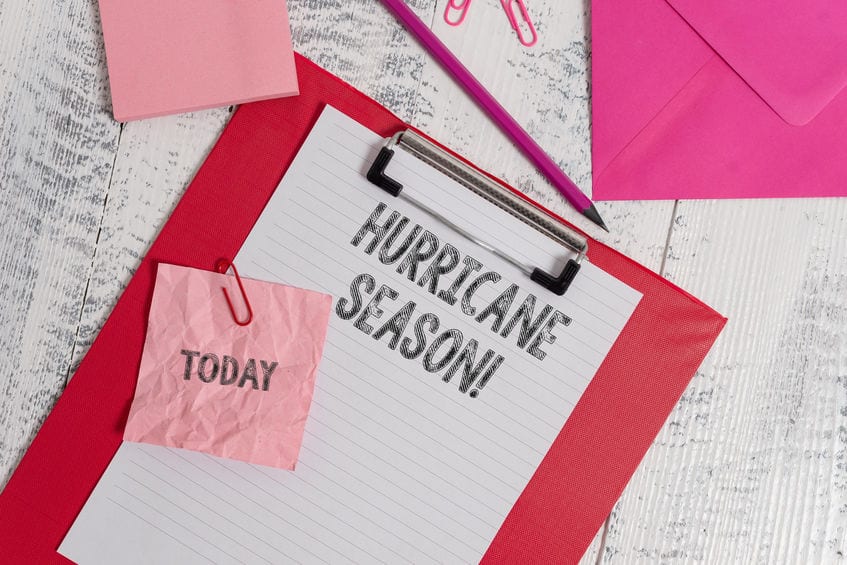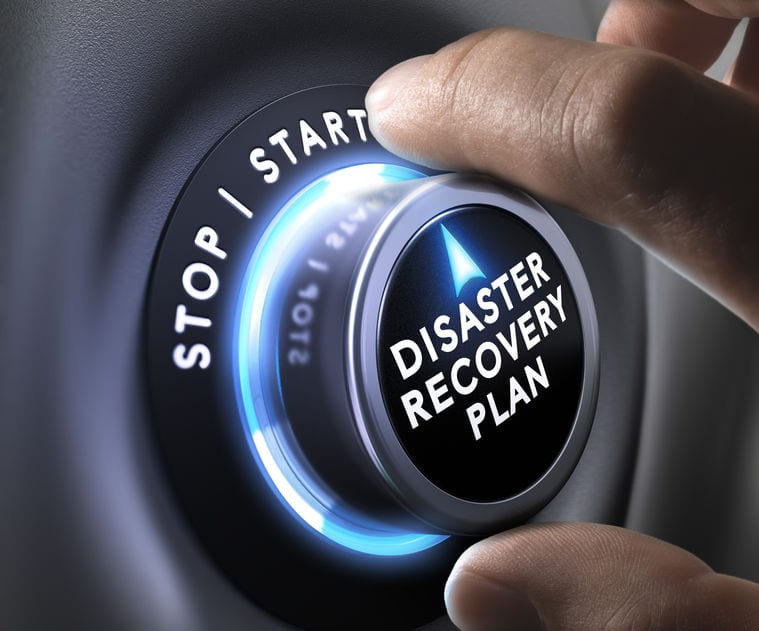
After Hurricane Harvey hit Texas, if a Houston business owner did not have a hurricane preparedness plan then, they do now… or should have one now! However, many business owners are still lacking a plan to protect their business’ IT infrastructure and business data. As a benefit, here are some best practices and an IT Checklist to help businesses be prepared for this hurricane/tropical storm season.
IDENTIFY WHAT IS MOST IMPORTANT
It is a big task to plan for disruptions that may result in danger to your employees and considerable financial loss. The place to start is examine what it takes to keep your business up and running and what is relevant in dealing with a storm or hurricane. It will be your people, your location and your assets.

- Safety of Your People: Your employees look to management to keep them safe and for guidance and leadership. Even more during a disaster event. Several factors will need to be considered to protect your employees:
- Is there a mass notification method in place to notify your employees fast?
- Are there remote workers and how to know where they are at any given time?
- Is there a building badge system to be able to track an employee’s location?
- Is there a plan of when to close and send people home given the type of disaster?
- Inventory of Your Assets: Your location may be affected by flooding, power outages, high winds and more. Important assets such as your servers, network equipment, facilities, operations equipment or supplies are at risk in a hurricane or storm. Your computer networking support or managed IT services partner can assist on assessing your network assets. Take an inventory of your assets now to avoid problems later:
- List your critical assets
- The location of each asset?
- Can you protect each asset physically?
- Can the assets be moved or deployed elsewhere?
- Fortify Your Location: Wind and flood damage to a building can cause major damage to its contents. Even locations that are inland can still encounter heavy wind and rain and suffer major damage from a hurricane. Consider the following to plan for reinforcement steps:
- Which employees work at each location and where within those facilities?
- Where are the locations of all facilities of your company?
- What is the plan to reinforce those locations to withstand wind and water?
- Company Response Team: Choose your Company Response Team for your company to coordinate and communicate the critical aspects of business during a disaster. Typically, you should have a leader and others with clearly defined roles to coordinate the company’s actions during a crisis which may include the communications to employees, vendors and clients, the termination or migration of the company’s operations to the recovery site or staff. Training to ensure all know their roles and responses is important.
- Communication Methods: Choose your communication methods to ensure communication to every employee is safe and able to communicate during the storm/hurricane with management and with each other. Cell phones are often down or limited to texts during storms. Emails will be difficult from cell phones and home data connections when a storm is in the area. There is software that can be utilized to enable sending messages across multiple channels and devices at one time.
- Employee Education: Train and set the employee expectations with the identification of your Company Response Team (CRT), the communication methods and what is expected of them during a disaster, and if the company will try to operate in part or in full during a disaster. It is best to place the employee expectations and training materials on the company internal website and on paper they can carry during a disaster for access.

- Recovery Site Identification: It is always best to identify and plan for an alternative location to recover your business operations and IT services after a disaster has forced an abandonment of your current business location. A location outside of the potential affected area at a data center or a temporary office space are often chosen prior to a disaster.
IMPLEMENT YOUR PLAN
Do You Know Where Your Data Backups Are?
Your business data is the “heart of your business”. Best practices require both local and offsite backups. If your data is backed up but not stored offsite, a disaster may trap the “heart of your business” within a building you cannot access due to the storm’s water or by police.

- Crescent IT Systems recommends the local data backups be encrypted and verify its operation often.
- Managed IT service providers always utilize cloud-based backup systems to ensure that the data is offsite and safe in case the operations must be moved to a different location and the local backups are not available. Both cloud and local backups should be utilized.
- Keeping local backups offsite in a bank safety deposit box was thought to be a safe location for backup media until Harvey hit Houston and many banks’ safety deposit boxes were not waterproof, or the affected banks were closed for weeks due to water or lack of access. Store any local backup media in encrypted formats and in fire and waterproof in safe locations physically well beyond flood or wind damage threats.
- It is prudent to keep critical business data such as insurance, financial, operations, employee information or other critical operations information with the owners or managing employees in the form of USB drives or paper. Some level of operations may be possible while your IT infrastructure is offline. Store any critical non-digitized information, if any, in fireproof and waterproof bags/boxes and in a safe location out of the flood risk area.
Reinforcement of the Facilities:
During the assessment phase of your planning, the reinforcement of each location in regard its assets should have been considered. Water damage from hurricanes/storms are especially a risk to IT systems. The following steps will relate to protection against water damage.
- Place workstations and smaller IT devices like printers upon higher storage locations in a business above the possible flood level.
- Secure and anchor the rack mounted IT hardware in case a wall is blown in and wind damage is possible.
- A feature of some IT devices is that they automatically power on if the grid comes back up. It is best to unplug all equipment or disable the equipment to avoid damage from shorts if the equipment is water laden.
- Cover the windows with plywood on the exterior building areas near the critical IT systems that you are unable to relocate, including networking appliances, servers and large scanners, copiers and printers.
Want to know more about Business IT Disaster Preparedness?
There are many critical factors that need to be considered in preparing and surviving disasters. According to a report from the Federal Emergency Management Agency (FEMA), 40 percent of businesses do not reopen following a disaster. On top of that, another 25 percent fail within one year. Companies headquartered in Houston Texas have seen many storms and hurricanes and need to prepare to ensure business continuity.
Having a plan, and backups of your data, which is the heart of your business, is the key to recovering quickly from a disaster and preventing downtime and critical data loss.
Crescent IT Systems has been providing stress-free IT to its clients for over 24 years and has helped countless businesses prepare for and thrive during and after a disaster.
Contact us today for your FREE IT Technical Assessment that will help identify if you are prepared for a disaster as well as be a technical roadmap for the future.
Call us today at 281-358-3589 or email us at pegarrison@houstonalive.com

Resources
- Crescent IT Hurricane/Storm Survival Checklist
- TxDPS – TDEM Hurricane Awareness – Texas Department of Publi…
- Hurricane Preparedness Resources – for Texas Gulf Coast
- American Red Cross
- gov/hurricanesFEMA
- Federal Business Planning
